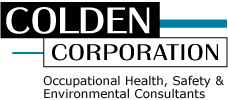Machine guarding every potentially dangerous piece of equipment in a workplace can be a confusing and daunting challenge. As one of OSHA’s top 10 most cited violations, a proper machine guarding program is paramount in ensuring compliance and worker safety. The basic principles of machine guarding state that guards must be affixed to the machine or secured to prevent easy removal, and the guard must protect the operator and nearby employees without creating additional hazards itself. This may be a straightforward concept, but applying it can be difficult, as every piece of equipment is unique, as are the hazards associated with them.
Machine guarding begins with hazard recognition. Hazards associated with moving equipment must be assessed before machines can be properly guarded. Minimum required distances from a rotating part or point of operation to the guard can be found in OSHA’s Machine Guarding Standard (29 CFR 1910.211-219, Subpart O).
Useful information on machine guarding is available:
- OSHA publishes a Machine Guarding eTool
- Domestic consensus standards such as ANSI B 11 series or ASME B5, 15 and 20 series (these are all referenced in the OSHA eTool)
- International consensus standards such as ISO 14120
Original equipment manufacturers do not necessarily address all hazards associated with an installed machine for operators, maintenance, engineers or clean-up personnel and others operating within a manufacturing environment. Owners must perform a risk assessment for installed machines to determine all hazards and remediation measures.
Two of the most powerful tools OSHA provides for assessing machine guards can be found in 29 CFR 1910.217. Although this is the standard for mechanical power presses, it lists general requirements for machine guarding which are commonly cited by compliance officers when an equipment specific standard does not exist.
29 CFR 1910.217(f)(4) provides a table of the maximum allowable width of openings for machine guards based on their distance from the point of operation hazard.
29 CFR 1910.217(h)(9)(v) provides a safety distance formula used to determine the minimum safety distance required when using a sensing field such as a photo-electric light curtain.
OSHA standards do not cover every type of equipment, yet all machine guarding deficiencies are citable under the General Duty Clause (Section 5 of OSH Act, 1970). ANSI B11.19-2010 is considered the most authoritative standard on machine guarding and provides an excellent reference when OSHA standards are vague or do not exist for a specific piece of equipment. The original equipment manufacturer may provide valuable information on safety standards. While OSHA regulations put the burden of responsibility of machine guarding on the end user, not the manufacturer, many manufacturers have taken a proactive approach, and will provide the pertinent information.
Running an old piece of equipment such as a lathe or press, which predates the requirements for guards is in violation of OSHA standards, unless these proper machine guards are used. Retrofitting old equipment with guards can be costly and time consuming. Keep this in mind when purchasing new equipment. Make machine guarding part of the review and acquisition process when deciding on new equipment. This forethought will keep employees safe, and reduce long term costs. In addition, equipment purchased from other countries may not hold the same machine guarding standards as the United States, and should be compared before purchase.
Regulations can be confusing and sometimes exceptions are required for specific processes. For instance, machine guarding requirements for some powered saws differ when cutting metal vs. cutting wood. OSHA issues letters of interpretation to clarify regulations when issues arise. Take caution when using search engines such as Google for these letters. A letter of interpretation is not valid unless it remains listed on the OSHA website. An internet search may reveal an old letter that is no longer valid.
Colden specializes in safety audits and risk assessments. From common cited hazards such as bench grinder tongues and work rests, to easily overlooked hazards such as safety interlock requirements and rotating shaft end extensions, our team of safety professionals will help ensure a safe workplace and regulatory compliance.
For additional information on Colden’s machine guarding assessments, please contact Susan Reynolds at 617.648.2356 or via email at reynolds@colden.com.
Cutting Through the Confusion of Machine Guarding (pdf)
References:
United States Department of Labor: OSHA Machine Guarding
https://www.osha.gov/SLTC/machineguarding/
Brenner, M. Debunking the Top Three Myths about Industrial Machine Safeguarding. Occupational Health & Safety. Feb, 2017.
https://ohsonline.com/Articles/2017/02/

